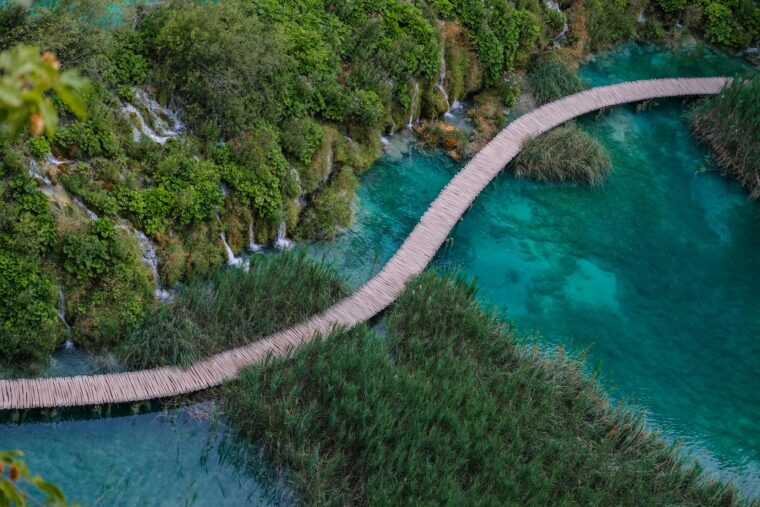Croatia, a country blessed with extraordinary natural beauty, is home to eight magnificent national parks that showcase the diverse landscapes and rich biodiversity of this Mediterranean gem. From cascading waterfalls and crystal-clear lakes to rugged mountains and pristine islands, Croatia’s national parks offer visitors a chance to experience some of Europe’s most spectacular natural wonders. These protected areas not only preserve Croatia’s natural heritage but also provide opportunities for adventure, education, and unforgettable experiences for millions of visitors each year.
The Croatian national park system represents the country’s commitment to conservation and sustainable tourism. Each park has its unique character and attractions, reflecting the remarkable geographical diversity found within Croatia’s borders. Whether you’re drawn to the turquoise waters of the Adriatic, the lush forests of the inland regions, or the dramatic mountain landscapes, Croatia’s national parks have something to offer every nature enthusiast.
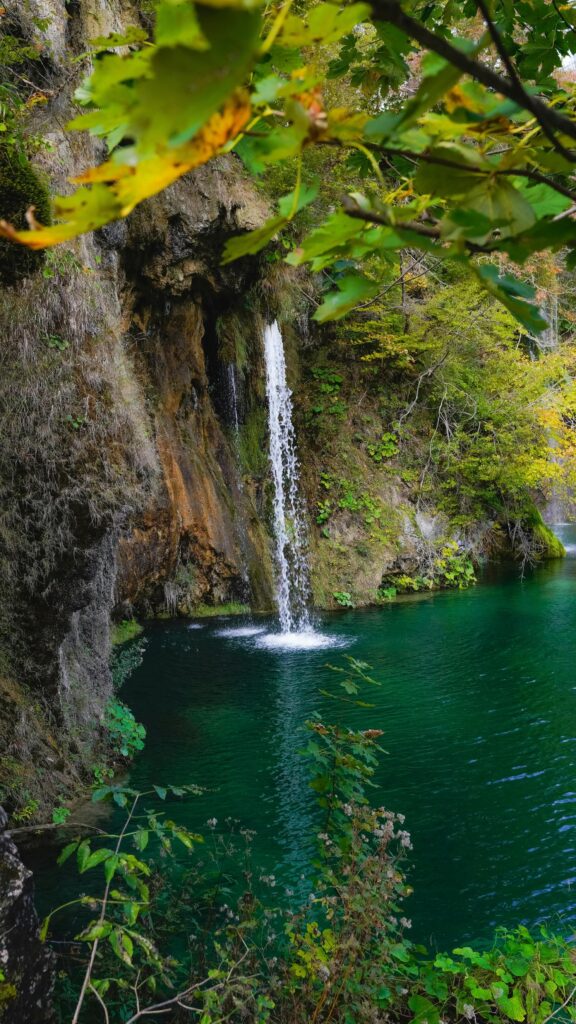
We’ll explore all eight of Croatia’s national parks, from the world-famous Plitvice Lakes to the lesser-known gems like Risnjak and Northern Velebit. We’ll also discover how these natural treasures can be experienced from a unique perspective – by yacht charter, offering an extraordinary way to access coastal parks while enjoying Croatia’s renowned sailing opportunities. Join us on this journey through Croatia’s most precious natural areas, where conservation meets adventure in perfect harmony.
Croatia’s National Park System
Croatia’s dedication to preserving its natural wonders dates back to the mid-20th century, with the establishment of its first national parks. The country’s conservation efforts began in earnest in 1949 when Plitvice Lakes became Croatia’s inaugural national park, followed closely by Paklenica in the same year. These early designations reflected growing awareness of the need to protect Croatia’s unique landscapes and ecosystems.
Over the decades, Croatia continued to expand its network of protected areas. Risnjak was established in 1953, followed by Mljet in 1960, Kornati in 1980, Brijuni in 1983, and Krka in 1985. The newest addition, Northern Velebit, was designated in 1999, completing the current system of eight national parks that cover a total area of 994 square kilometers – 759 square kilometers of land and 235 square kilometers of water.
Today, these parks are managed by specialized public institutions under the supervision of Croatia’s Ministry of Nature Conservation and Spatial Development. Each park has its own management plan focused on balancing conservation with visitor access. This approach has proven successful, with Croatia’s national parks attracting over 4.4 million visitors annually before the pandemic, with numbers steadily recovering and growing in recent years.
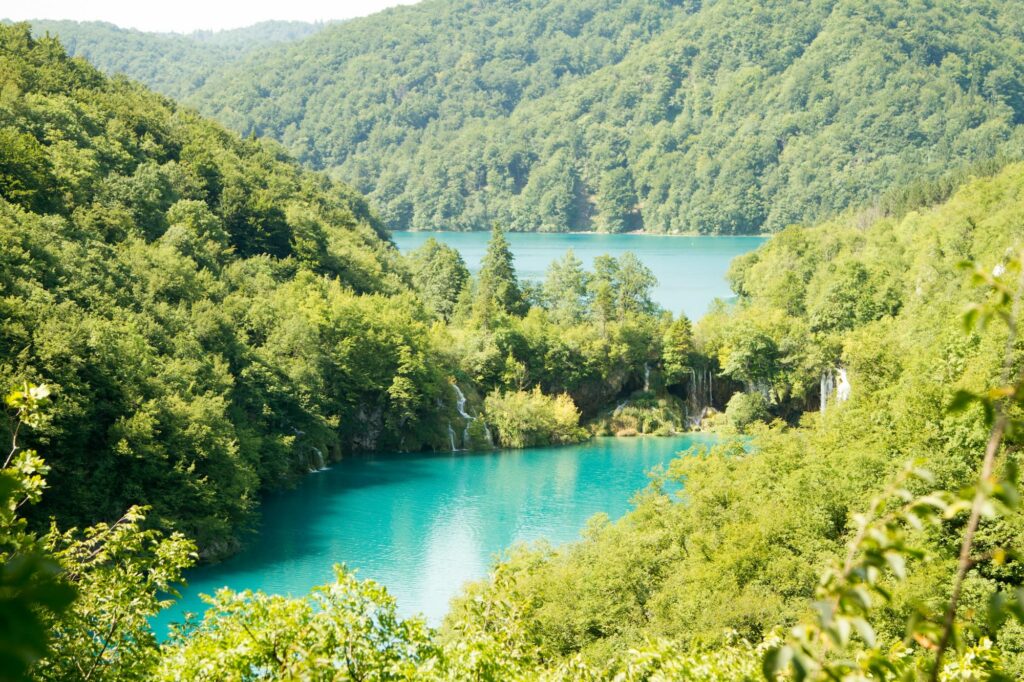
The parks play a vital role in Croatia’s tourism economy, which accounts for approximately 20% of the country’s GDP. However, this popularity brings challenges, particularly for famous sites like Plitvice Lakes, which received approximately 1.45 million visitors in 2023 alone. Balancing tourism with conservation remains an ongoing priority for park authorities, with initiatives focused on visitor management, sustainable infrastructure, and environmental education.
Plitvice Lakes National Park: Croatia’s Crown Jewel
Plitvice Lakes National Park (Nacionalni park Plitvička jezera) stands as Croatia’s most renowned natural attraction and holds the distinction of being the country’s first national park. Established in 1949 and recognized as a UNESCO World Heritage site since 1979, Plitvice Lakes captivates visitors with its extraordinary system of 16 interconnected lakes arranged in cascades.
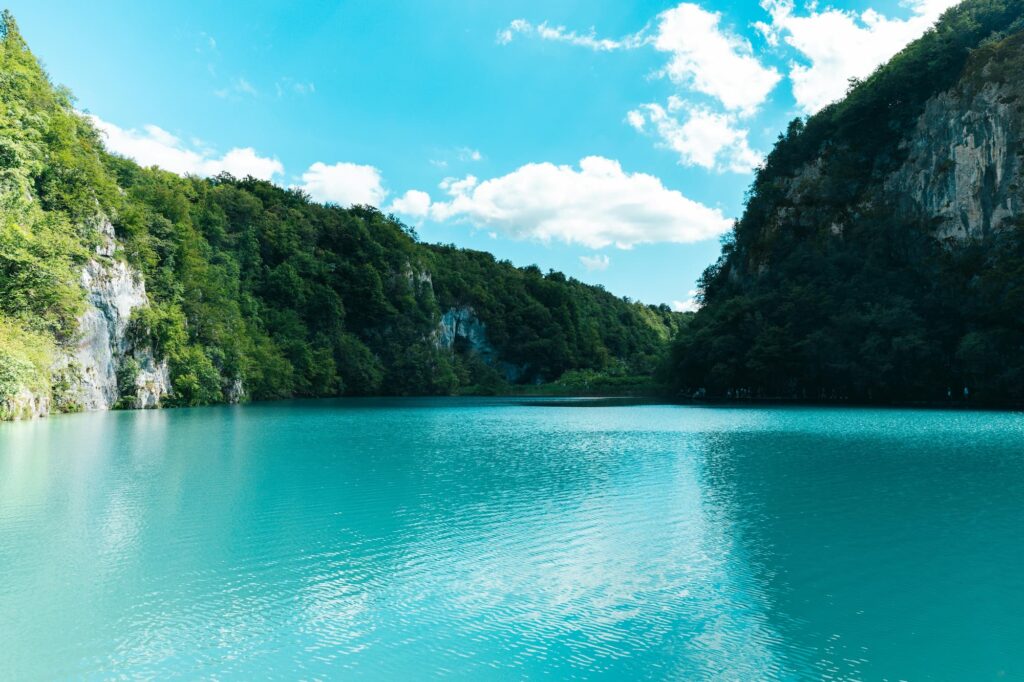
What makes Plitvice truly remarkable is the ongoing geological process that shapes its landscape. The lakes are formed by natural dams of travertine, a type of limestone deposited by the action of moss, algae, and bacteria. The water flowing over these barriers creates a series of stunning waterfalls, with new travertine constantly forming and reforming the landscape. The lakes themselves display mesmerizing colors ranging from azure to green, gray, and blue, depending on the mineral content and lighting conditions.
The park covers nearly 30,000 hectares of primarily forested area, providing habitat for diverse wildlife including bears, wolves, and numerous rare bird species. Visitors can explore the park via a network of wooden walkways and hiking trails that offer breathtaking views of the lakes and waterfalls. The most impressive single waterfall is Veliki Slap (the Big Waterfall), which plunges 78 meters into the valley below.
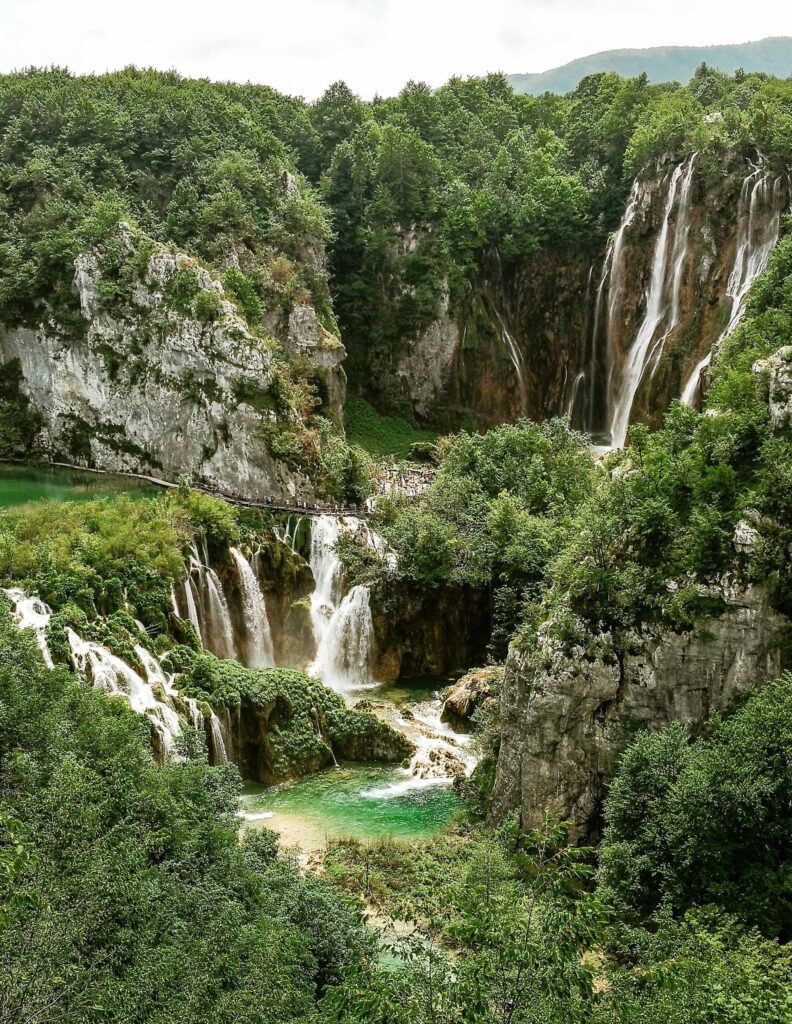
For visitors planning a trip to Plitvice, the park is open year-round, though each season offers a different experience. Spring brings abundant water flow and blooming vegetation, summer offers warm temperatures but larger crowds, autumn displays spectacular foliage colors, and winter transforms the waterfalls into magical ice sculptures. Entrance fees vary by season, with higher prices during peak summer months and discounts available in the off-season.
The park offers seven different routes of varying lengths and difficulty, allowing visitors to tailor their experience based on time constraints and physical ability. Electric boats and shuttle buses help visitors navigate between different sections of the park. For the best experience, arrive early in the morning to avoid crowds, especially during the peak summer season, and consider staying overnight in nearby accommodations to allow for a more leisurely exploration.
Krka National Park: Waterfalls and Cultural Heritage
Located in central Dalmatia near the city of Šibenik, Krka National Park (Nacionalni park Krka) offers visitors a magnificent blend of natural wonders and cultural heritage. Named after the Krka River that flows through it, this park was established in 1985 and covers an area where the river has carved a spectacular canyon through the karst landscape.
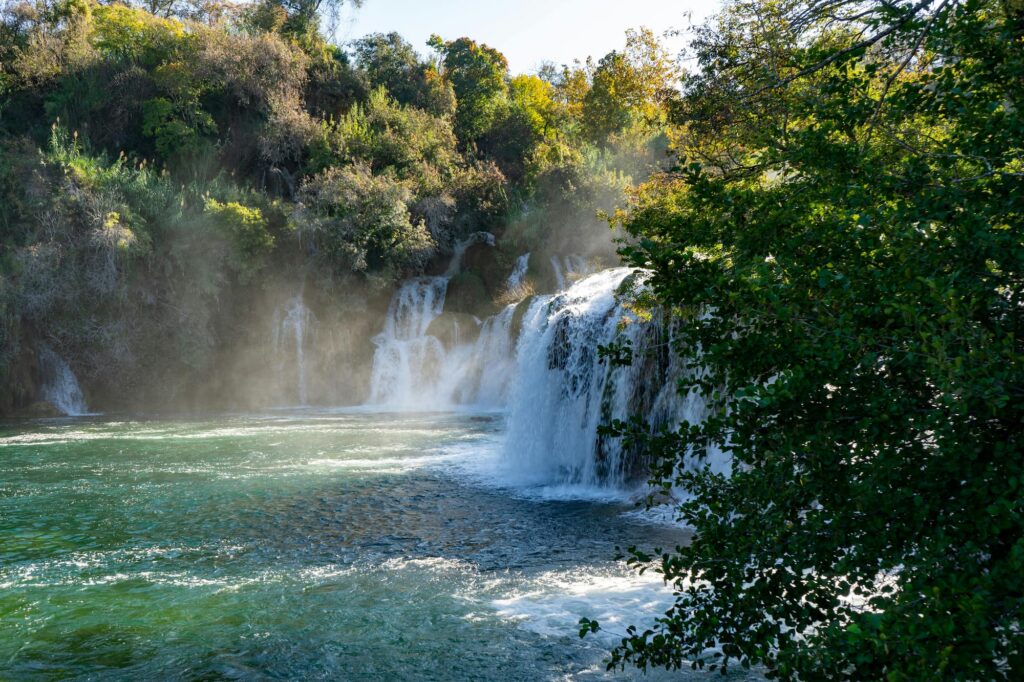
The park’s most famous attraction is Skradinski buk, one of Europe’s most beautiful calcium carbonate waterfalls. This natural phenomenon consists of 17 waterfall steps spanning over 800 meters in length and 45 meters in total height. The crystal-clear waters of the Krka River create emerald pools and cascades surrounded by lush vegetation, offering some of Croatia’s most photogenic landscapes.
Beyond its natural beauty, Krka National Park preserves significant cultural and historical sites. The Franciscan monastery on Visovac Island, dating back to the 15th century, sits serenely in the middle of Visovac Lake. The park also contains medieval fortresses, traditional watermills, and the Krka Monastery, an important spiritual center for Orthodox Christians.
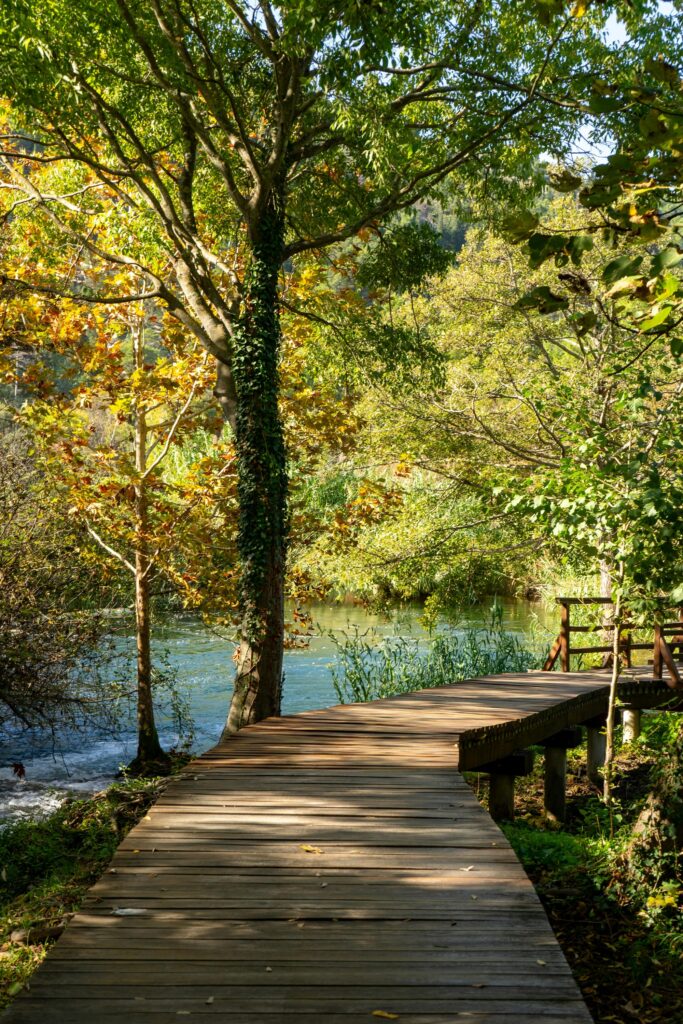
Krka’s biodiversity is equally impressive, with over 860 plant species, including many endemic varieties. The river and surrounding habitats support diverse wildlife, from fish and amphibians to birds and mammals. The olm, a rare aquatic salamander adapted to underground life, is among the park’s most unusual inhabitants.
Visitors to Krka can access the park through five entrances, with Lozovac and Skradin being the most popular. From Skradin, a pleasant boat ride takes visitors into the heart of the park. While swimming beneath the waterfalls was once permitted, this activity is now prohibited to protect the sensitive ecosystem. However, visitors can still enjoy walking trails, boat excursions, and educational exhibits throughout the park.
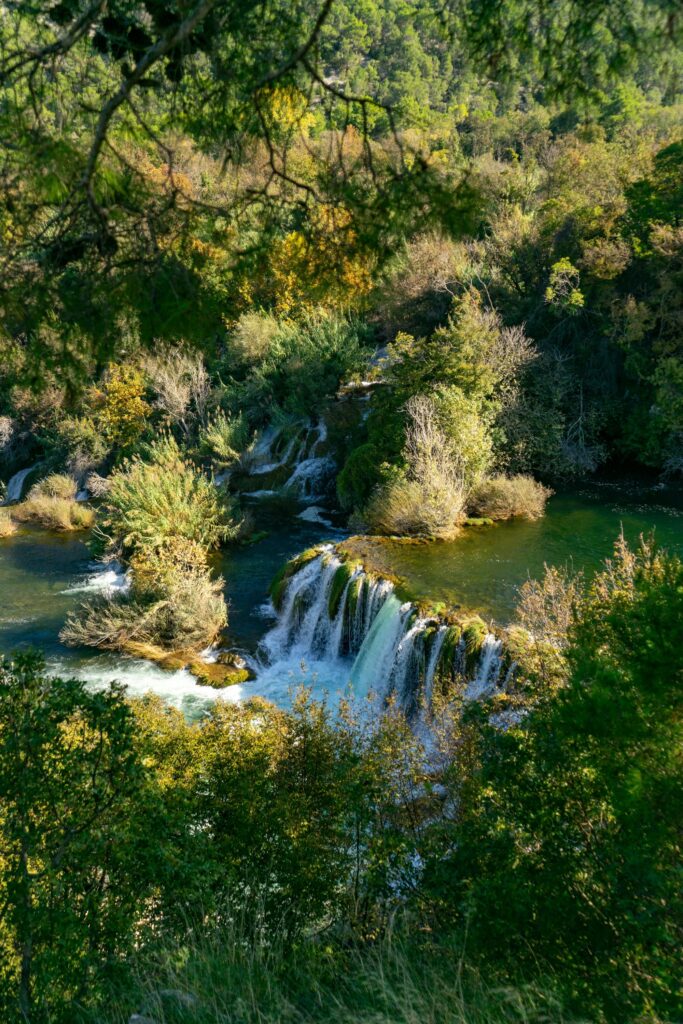
The best times to visit Krka are late spring and early fall when temperatures are pleasant and visitor numbers are lower than during the peak summer season. The park is open year-round, with extended hours during summer months. Entrance fees vary by season, with discounts available for children, students, and seniors.
Kornati National Park: An Archipelago Paradise
Kornati National Park (Nacionalni park Kornati) presents a strikingly different landscape compared to Croatia’s other national parks. Established in 1980, this maritime park encompasses 89 islands, islets, and reefs scattered across 220 square kilometers of the Adriatic Sea, with only about one-quarter being land and the rest comprising the surrounding marine ecosystem.
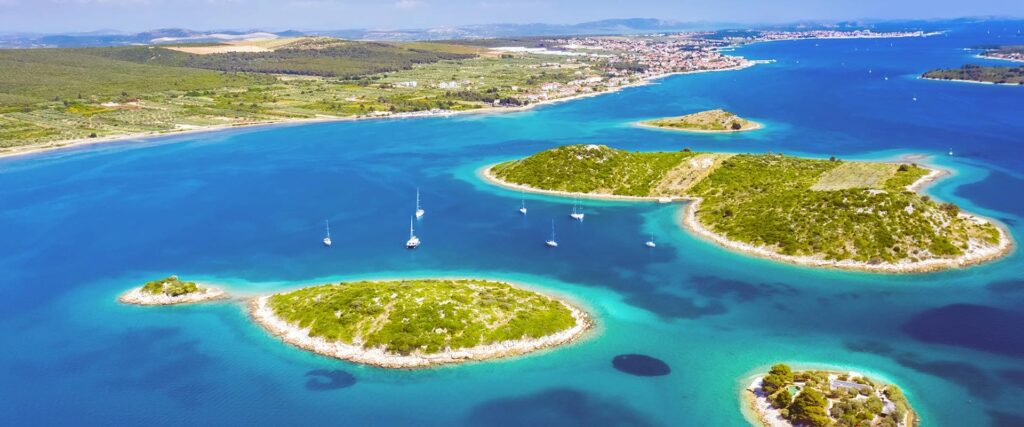
The Kornati islands are characterized by their barren, moonlike appearance, with sparse vegetation giving them an almost otherworldly quality. This distinctive landscape prompted Irish playwright George Bernard Shaw to famously remark that God created the Kornati Islands “from tears, stars, and breath.” The islands’ rugged beauty lies in their stark limestone cliffs, crystal-clear waters, and hidden coves rather than lush forests or dramatic waterfalls. See island hopping adventures.
What makes Kornati truly special is its marine biodiversity. The waters surrounding the islands teem with life, hosting over 350 species of algae, 850 animal species, and numerous fish varieties. This rich underwater world makes Kornati a paradise for divers and snorkelers. The “crown” formations – steep cliffs that plunge vertically into the sea on the outer sides of the islands – are particularly impressive both above and below the water.
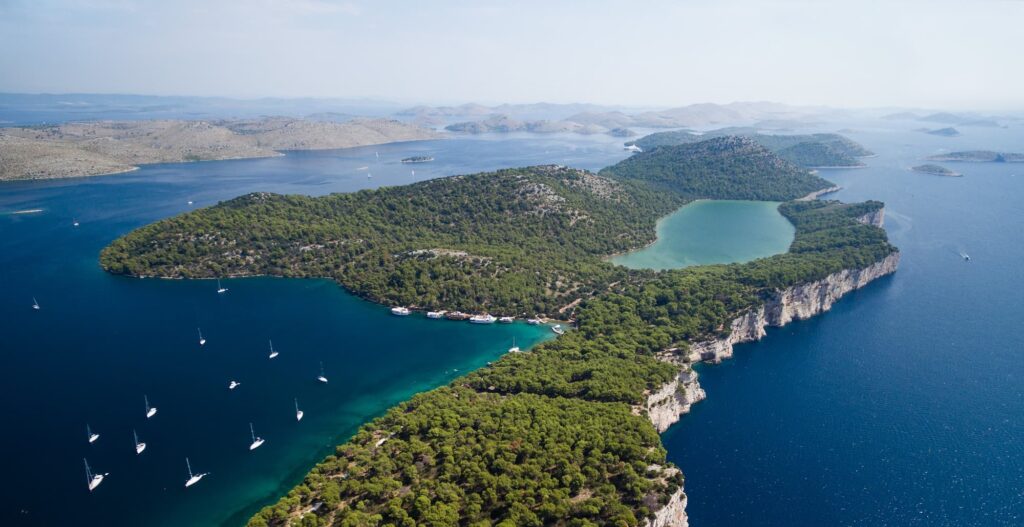
As a maritime park, Kornati can only be accessed by boat. No permanent settlements exist on the islands, though simple stone houses called “komarde” dot the landscape, traditionally used by fishermen and shepherds. Today, some serve as seasonal restaurants offering fresh seafood to visitors.
For sailors and yacht enthusiasts, Kornati represents the ultimate Croatian sailing destination. The archipelago’s numerous bays provide safe anchorages, while the channels between islands offer excellent sailing conditions. Several designated mooring areas allow overnight stays within the park boundaries, though visitors must purchase entrance tickets and adhere to strict environmental regulations to preserve this delicate ecosystem.

The best time to visit Kornati is during the sailing season from April to October, with May, June, and September offering pleasant conditions with fewer crowds. Organized day trips depart regularly from coastal towns like Zadar, Šibenik, and Murter for those without their own vessel.
Mljet National Park: The Green Island
Mljet National Park (Nacionalni park Mljet) occupies the northwestern third of Mljet Island, often referred to as Croatia’s greenest island. Established in 1960, this park protects a unique landscape where dense Mediterranean forests meet crystal-clear seawater lakes, creating one of the Adriatic’s most distinctive ecosystems.
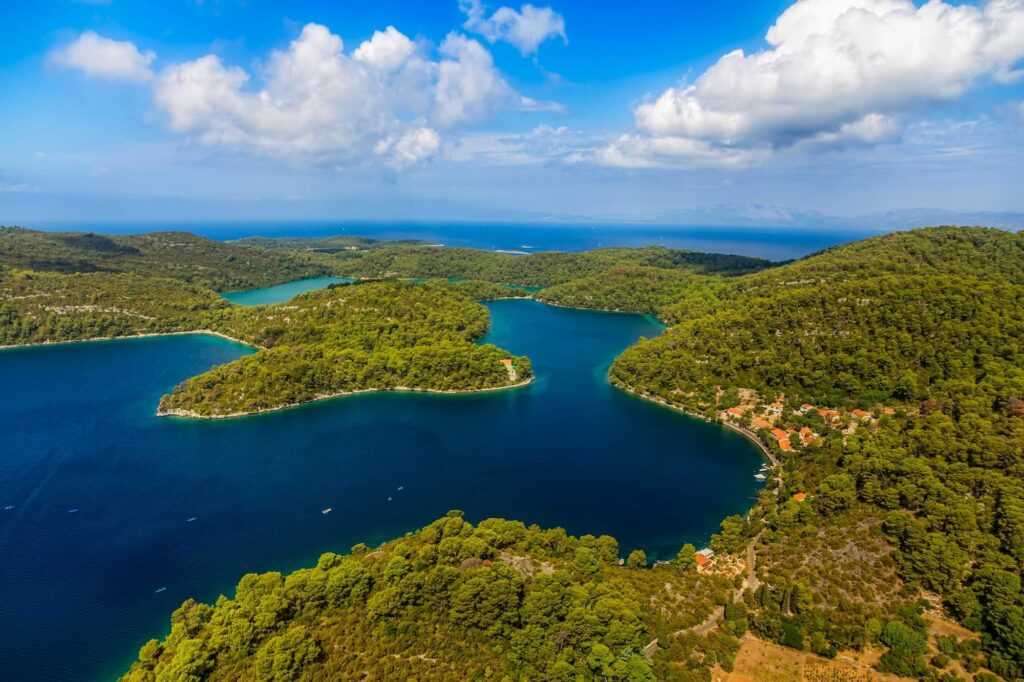
The park’s most remarkable feature is its two interconnected saltwater lakes – Veliko Jezero (Big Lake) and Malo Jezero (Small Lake). These lakes formed when rising sea levels flooded former freshwater sinkholes, creating inland marine environments of exceptional beauty. In the middle of Veliko Jezero sits the tiny Isle of Saint Mary (Otok Svete Marije), home to a 12th-century Benedictine monastery that adds cultural significance to the natural splendor.
Mljet’s forests are among the most preserved in the Mediterranean, with Aleppo pine and holm oak creating a verdant canopy that covers much of the island. This lush environment supports diverse wildlife, including the small Indian mongoose, introduced to the island in the early 20th century to control venomous snakes. The surrounding waters host rich marine life, making Mljet a popular destination for swimming, snorkeling, and diving.
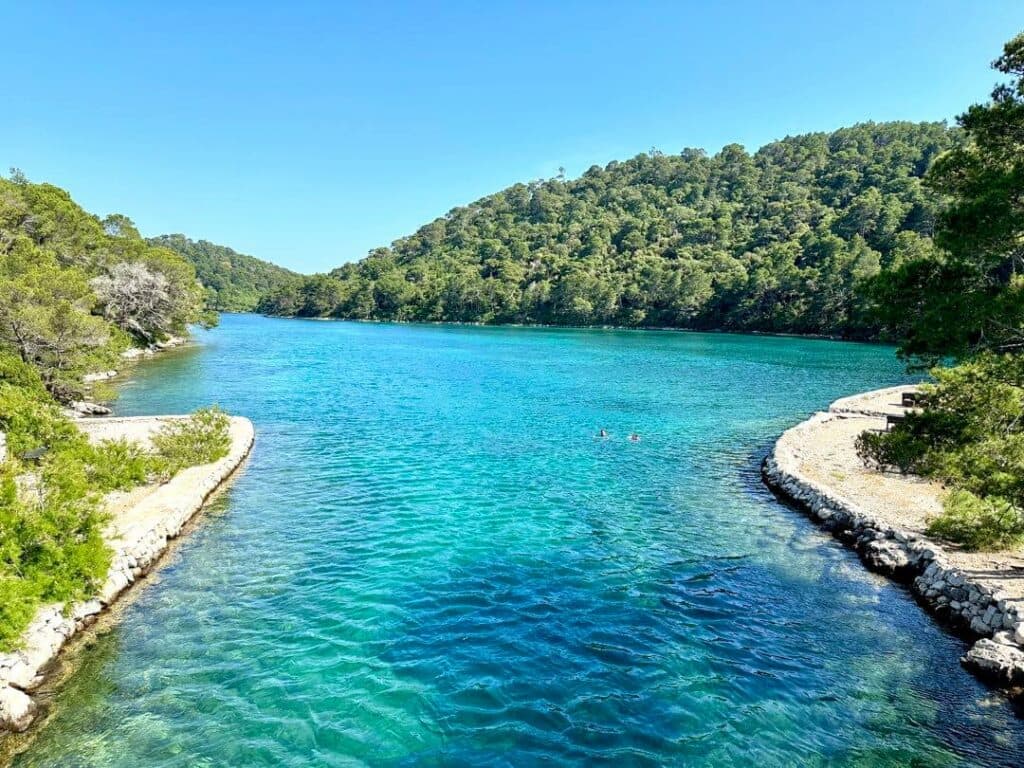
Visitors can explore the park via hiking and cycling trails that wind through the forests and around the lakes. Solar-powered boats provide transportation across the lakes, offering an eco-friendly way to reach the monastery island. Kayaking is another popular activity, allowing visitors to explore the shorelines of the lakes at their own pace.
Mljet is accessible by ferry from Dubrovnik and the Pelješac Peninsula, with most visitors arriving at Pomena or Polače, the two main settlements within the park boundaries. The best time to visit is during summer when warm temperatures make swimming in the lakes particularly enjoyable, though spring and fall offer pleasant conditions with fewer crowds.
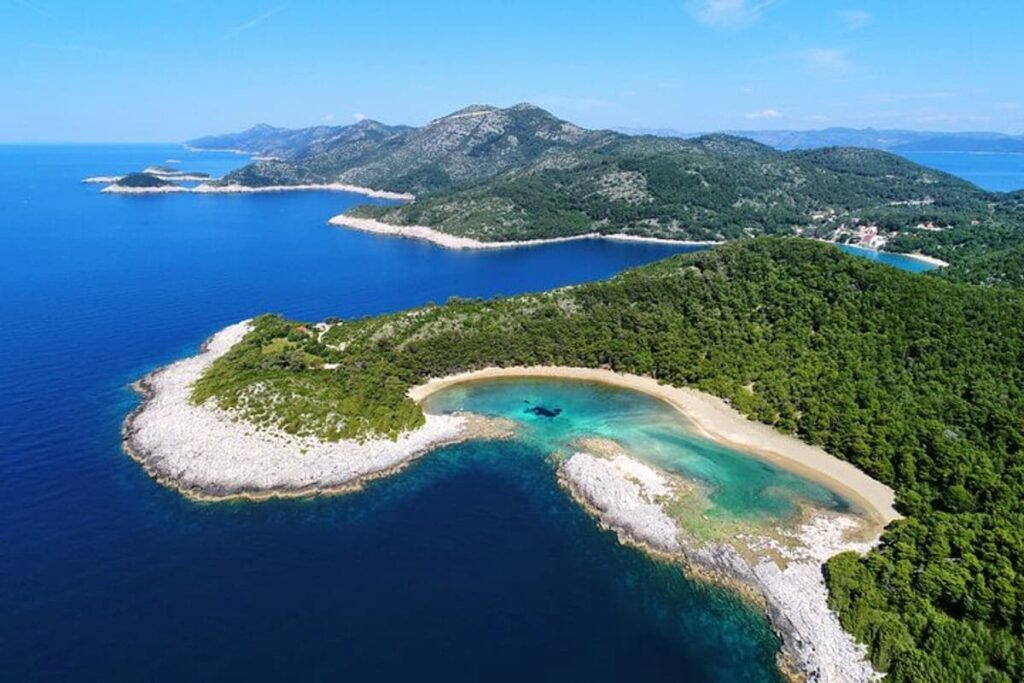
Entrance fees to the park include boat transportation on the lakes, and tickets can be purchased at the park entrances. Accommodations within the park are limited but include small hotels, apartments, and a campsite, allowing visitors to experience the tranquility of Mljet after day-trippers have departed.
Paklenica National Park: A Climber’s Paradise
Paklenica National Park (Nacionalni park Paklenica), established in 1949 as Croatia’s second national park, protects a dramatic landscape where the Velebit mountains meet the Adriatic Sea. Located near Zadar in northern Dalmatia, the park is defined by two impressive canyons – Velika Paklenica and Mala Paklenica – carved through the limestone by mountain streams over millennia.
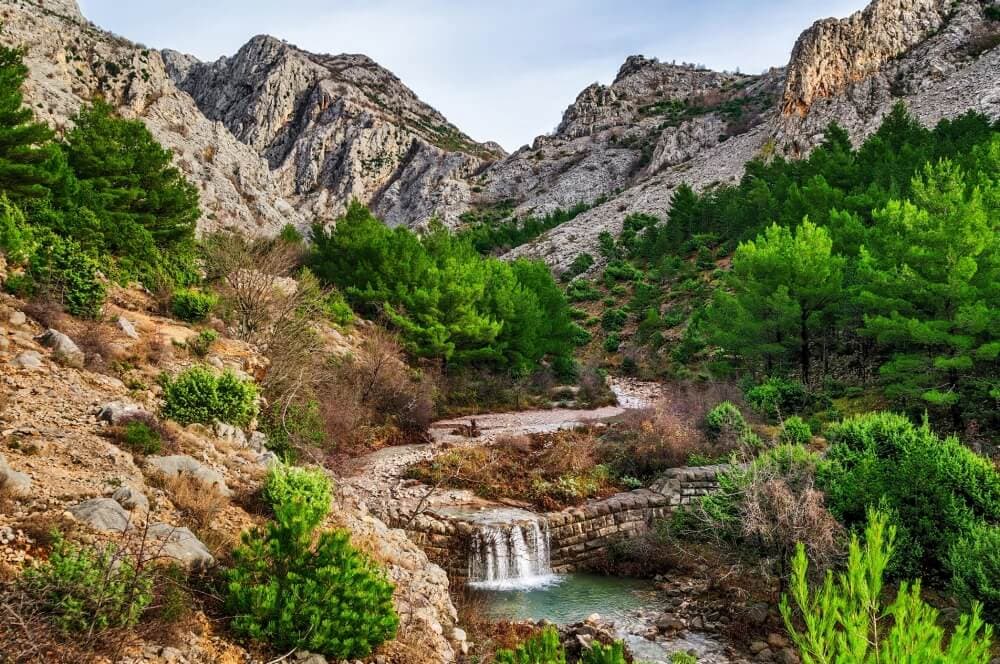
The park covers 95 square kilometers of diverse terrain, from coastal areas to peaks reaching over 1,700 meters. This vertical range creates varied microclimates supporting rich biodiversity, with more than 1,000 plant species, including many endemics adapted to the karst environment. The forests of black pine and beech provide habitat for wildlife including bears, wolves, lynx, and numerous bird species.
Paklenica is internationally renowned as a rock climbing destination, with over 500 routes of varying difficulty on the limestone cliffs of Velika Paklenica canyon. The 400-meter vertical face known as Anića kuk attracts climbers from around the world and has hosted international climbing competitions. For those who prefer keeping their feet on the ground, the park offers over 150 kilometers of hiking trails, from easy walks to challenging mountain ascents.
One of the park’s most interesting features is Manita peć, a magnificent cave adorned with stalactites and stalagmites, open to visitors with guided tours. The educational trail in Velika Paklenica canyon showcases the park’s geological features and traditional lifestyle of the region, including the reconstructed Paklenica mill and ethno-house Marasović.
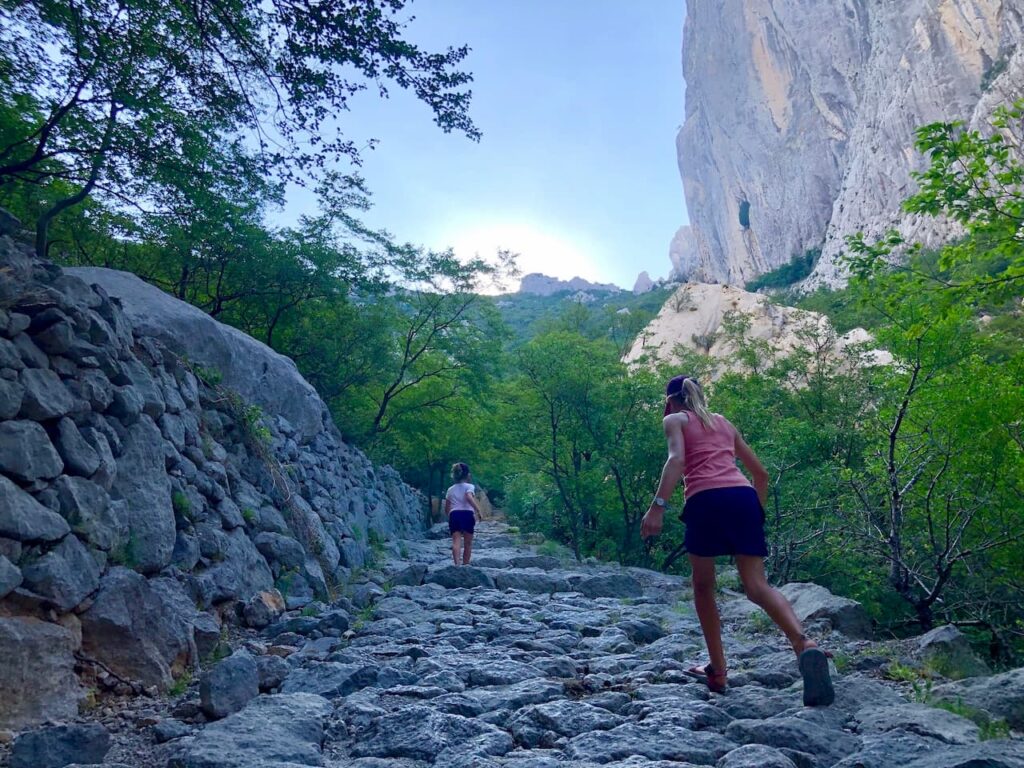
The best times to visit Paklenica are spring and early autumn when temperatures are moderate and the landscape is either blooming or displaying fall colors. Summer can be quite hot, especially in the canyons, though the higher elevations offer relief from the heat. The park is accessible year-round, with entrance fees collected at the main canyon entrances.
Paklenica’s proximity to coastal resorts makes it an excellent day trip destination, allowing visitors to combine mountain adventures with beach relaxation. For those wishing to stay longer, mountain lodges within the park and accommodations in nearby towns provide options for extended exploration of this magnificent mountain wilderness.
Brijuni National Park: Islands of History and Luxury
Brijuni National Park (Nacionalni park Brijuni) consists of 14 islands and islets off the western coast of Istria, combining natural beauty with extraordinary historical significance. Established as a national park in 1983, Brijuni’s 34 square kilometers encompass landscapes shaped by human presence dating back to prehistoric times.
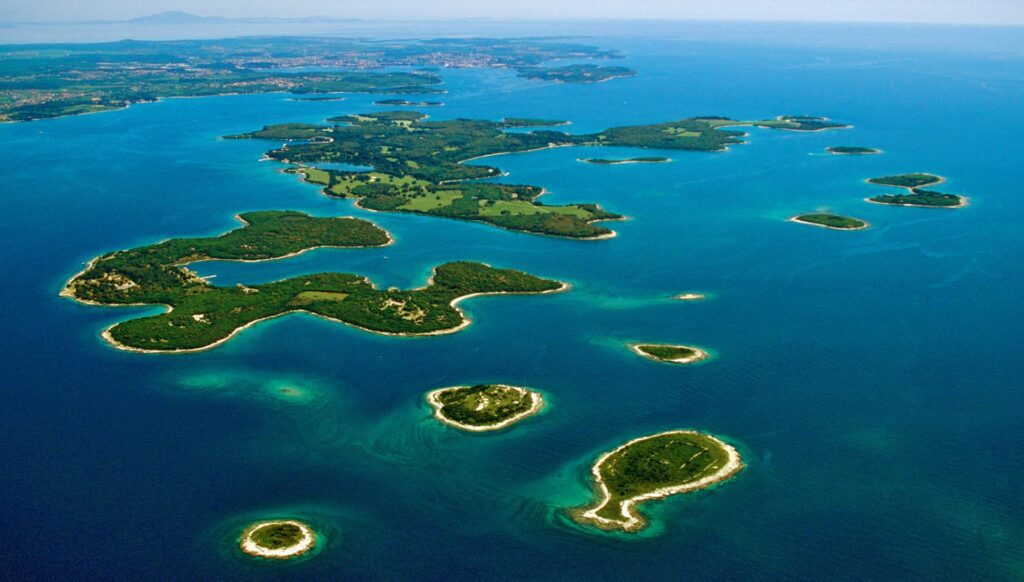
The islands’ most famous period began in the early 20th century when Austrian industrialist Paul Kupelwieser transformed Veliki Brijun (the largest island) into an exclusive resort for European aristocracy and celebrities. This legacy of luxury continued when Yugoslav President Josip Broz Tito made Brijuni his personal summer residence for over 30 years, hosting world leaders and film stars.
Tito’s presence left a unique mark on the islands – the Safari Park, where exotic animals gifted to him by world leaders roam freely. Visitors today can see elephants, zebras, llamas, and other non-native species alongside the indigenous deer and mouflon that inhabit the islands’ meadows and forests.
Beyond wildlife, Brijuni preserves remarkable archaeological sites spanning multiple eras. Dinosaur footprints from the Cretaceous period, Roman villa ruins, a Byzantine castrum, and a Knights Templar church all testify to the islands’ rich history. Perhaps most impressive is the 1,600-year-old olive tree that still produces fruit, a living monument to the islands’ ancient Mediterranean culture.
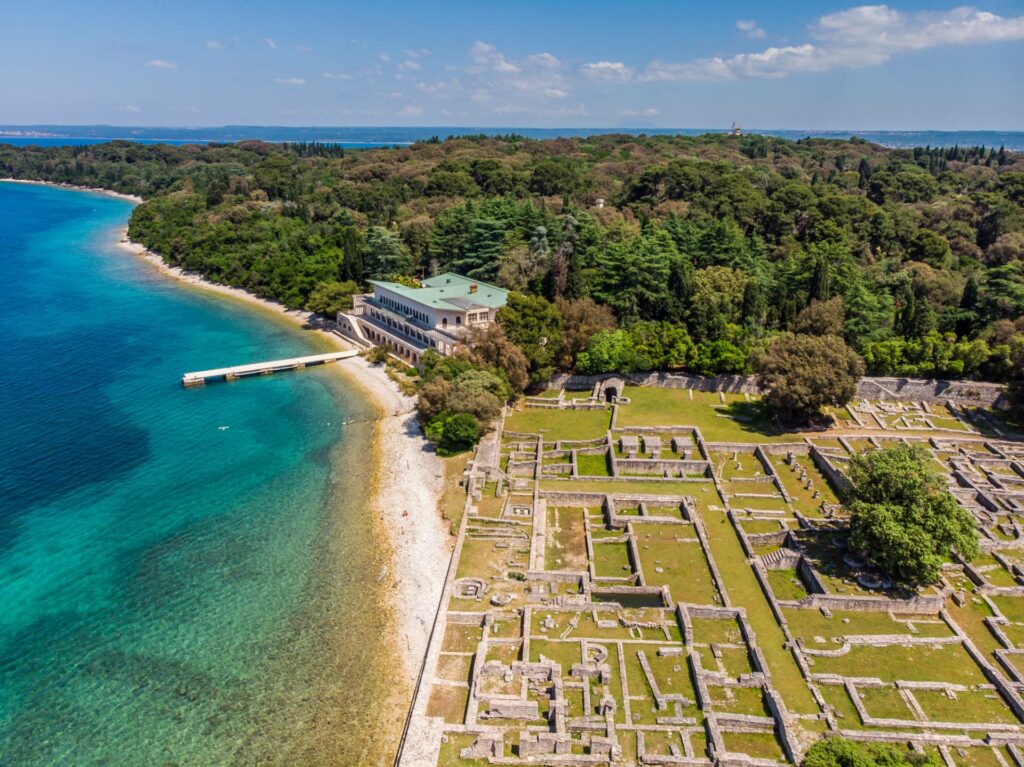
Visitors access Brijuni via a short boat ride from Fažana on the mainland. Most tours of Veliki Brijun include a ride on the tourist train that circles the island, visits to the main archaeological sites, and the Safari Park. Swimming in the crystal-clear waters surrounding the islands is another highlight, with several beautiful beaches available for visitors.
The best time to visit Brijuni is during the summer months when boat connections are most frequent and all attractions are open. Entrance fees include boat transportation and guided tours. While day trips are most common, the heritage hotel on Veliki Brijun allows some visitors to experience the islands’ tranquility after the day tourists have departed – a privilege once reserved for the elite.
Risnjak National Park: Mountain Wilderness
Risnjak National Park (Nacionalni park Risnjak), established in 1953, protects a mountainous area in the Gorski Kotar region of western Croatia. Named after the lynx (ris in Croatian) that inhabits its forests, Risnjak covers 63 square kilometers of diverse mountain ecosystems centered around Mount Risnjak, which rises to 1,528 meters.
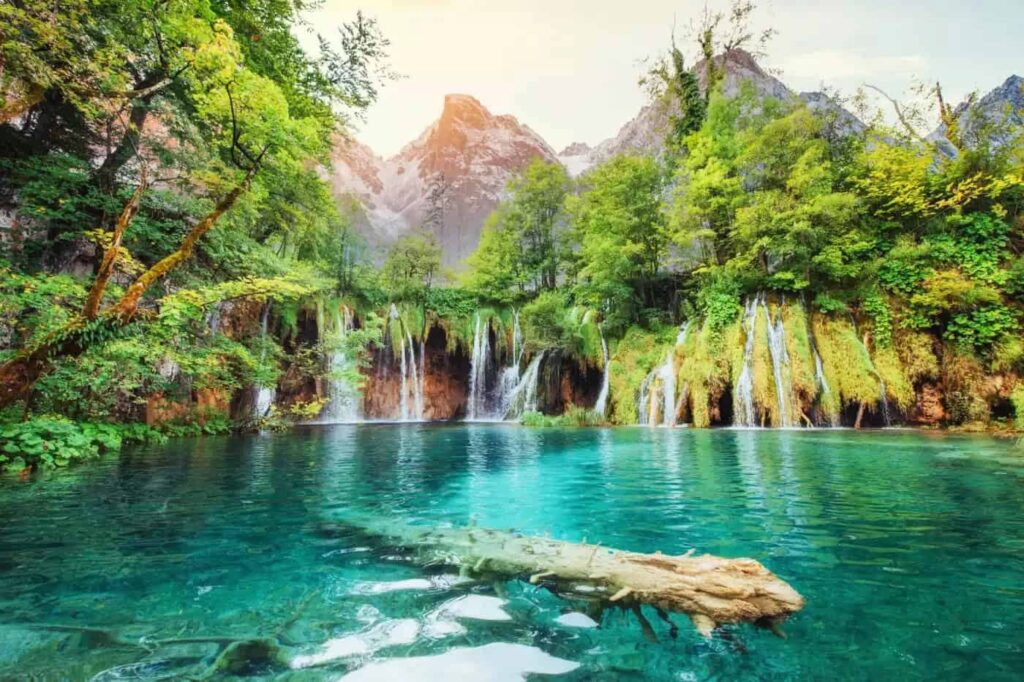
What makes Risnjak special is its position at the intersection of different climate zones and biogeographical regions. Here, the Alpine, Dinaric, and Mediterranean influences create exceptional biodiversity within a relatively small area. The park encompasses dense forests of beech, fir, and spruce, alpine meadows, karst formations, and the source of the Kupa River, one of Croatia’s most important waterways.
This diversity of habitats supports remarkable wildlife, including all three of Europe’s large carnivores – the brown bear, wolf, and lynx – making Risnjak one of the few places in Europe where these species coexist. Birdwatchers can spot over 100 species, including rare mountain specialists like the capercaillie and three-toed woodpecker.
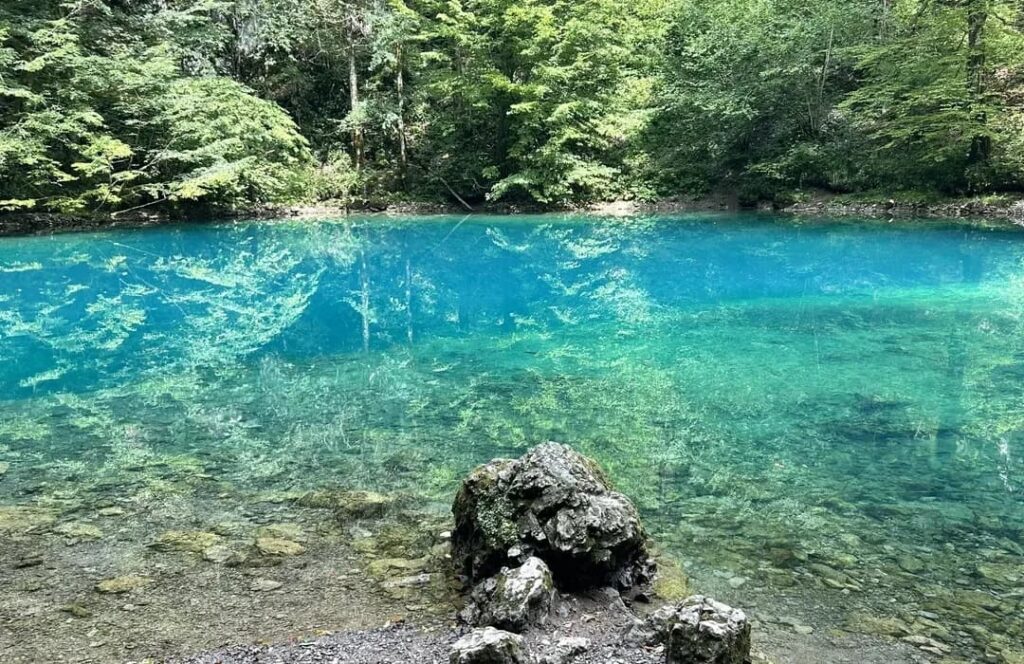
For visitors, Risnjak offers a network of hiking trails ranging from easy walks to challenging mountain ascents. The educational trail at Leska presents the park’s natural features through informative displays. The peak of Mount Risnjak rewards hikers with panoramic views extending to the Adriatic Sea on clear days. The Kupa River source, a deep turquoise pool emerging from a cave at the mountain’s base, is another popular destination within the park.
Risnjak receives far fewer visitors than coastal national parks, making it an ideal destination for those seeking tranquility and authentic wilderness experiences. The park is accessible year-round, though winter brings heavy snow that limits access to some areas. The main visitor center at Crni Lug provides information and serves as the starting point for many hiking routes.
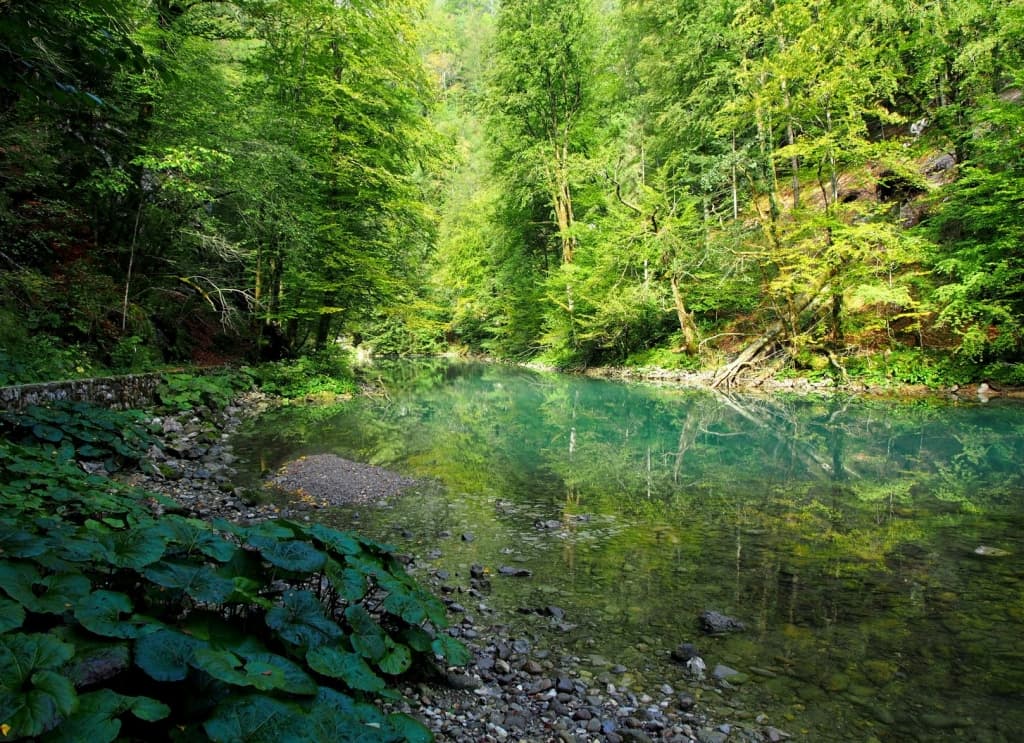
Accommodations within the park are limited to the mountain lodge at Risnjak peak, offering basic shelter for hikers. Most visitors stay in nearby towns like Delnice or Crni Lug, using them as bases for day trips into the park. The best time to visit is late spring through early autumn when trails are clear of snow and mountain flowers are in bloom.
Northern Velebit National Park: Croatia’s Newest Natural Treasure
Northern Velebit National Park (Nacionalni park Sjeverni Velebit), established in 1999 as Croatia’s newest national park, protects some of the most pristine mountain landscapes in the country. Covering 109 square kilometers of the northern section of the Velebit mountain range, the park is characterized by dramatic karst formations, deep pits, diverse flora, and spectacular viewpoints overlooking the Adriatic.
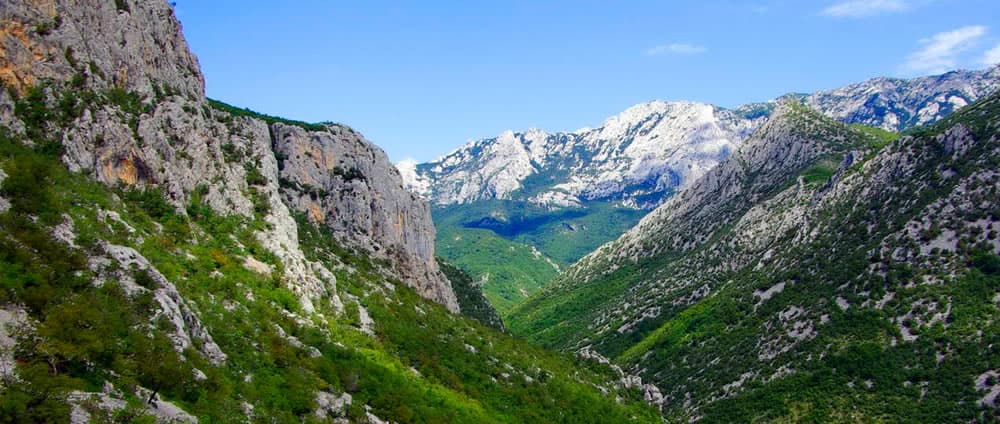
The park’s most distinctive feature is the Hajdučki i Rožanski kukovi strict nature reserve, a maze of more than 150 limestone peaks rising above dense forests. This area contains some of the deepest cave systems in Croatia, including Lukina jama, which descends 1,431 meters into the mountain. These underground worlds host unique cave-dwelling species that have evolved in isolation.
Northern Velebit’s botanical richness is extraordinary, with over 950 plant species and subspecies, many of which are endemic to the Velebit range. The Velebit Botanical Garden, established in 1967, showcases this diversity with plants arranged according to their natural habitats. Alpine meadows burst with colorful wildflowers during the brief mountain summer, creating carpets of color against the limestone backdrop.
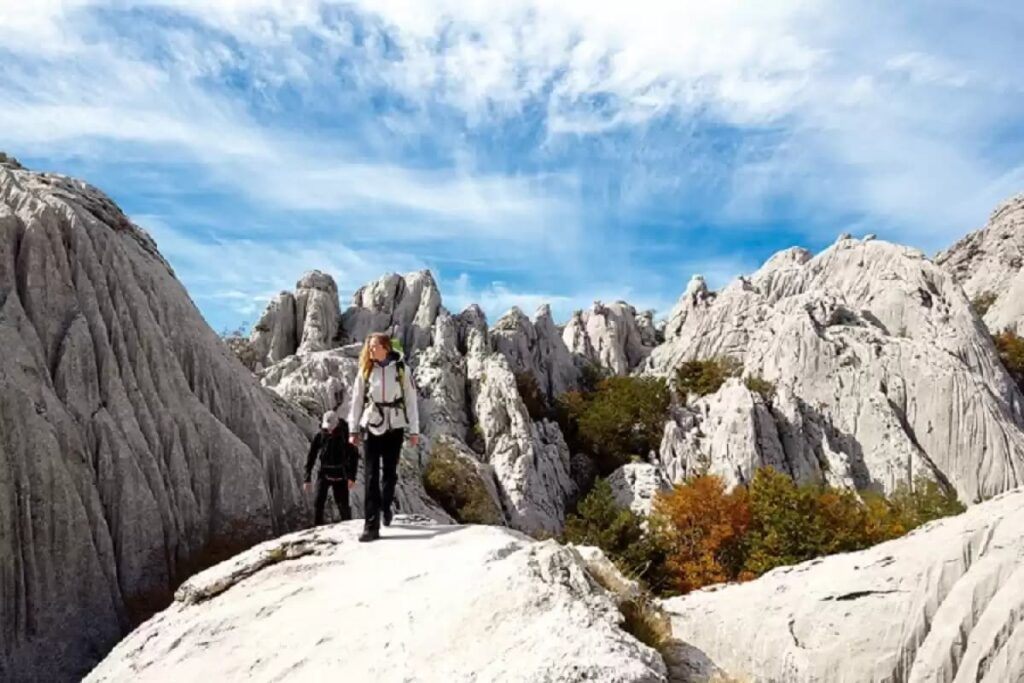
Wildlife in the park includes bears, wolves, and lynx, though these elusive predators are rarely seen by visitors. More commonly encountered are chamois, deer, and various bird species adapted to the mountain environment. The park’s remoteness and limited human impact have preserved these natural communities in a near-pristine state.
Hiking is the primary activity in Northern Velebit, with the Premužić Trail being the most famous route. Built in the 1930s, this 57-kilometer path traverses the ridge of Velebit, offering spectacular views while making the rugged terrain accessible to hikers of moderate ability. Other trails range from short walks to demanding mountain ascents, providing options for all experience levels.
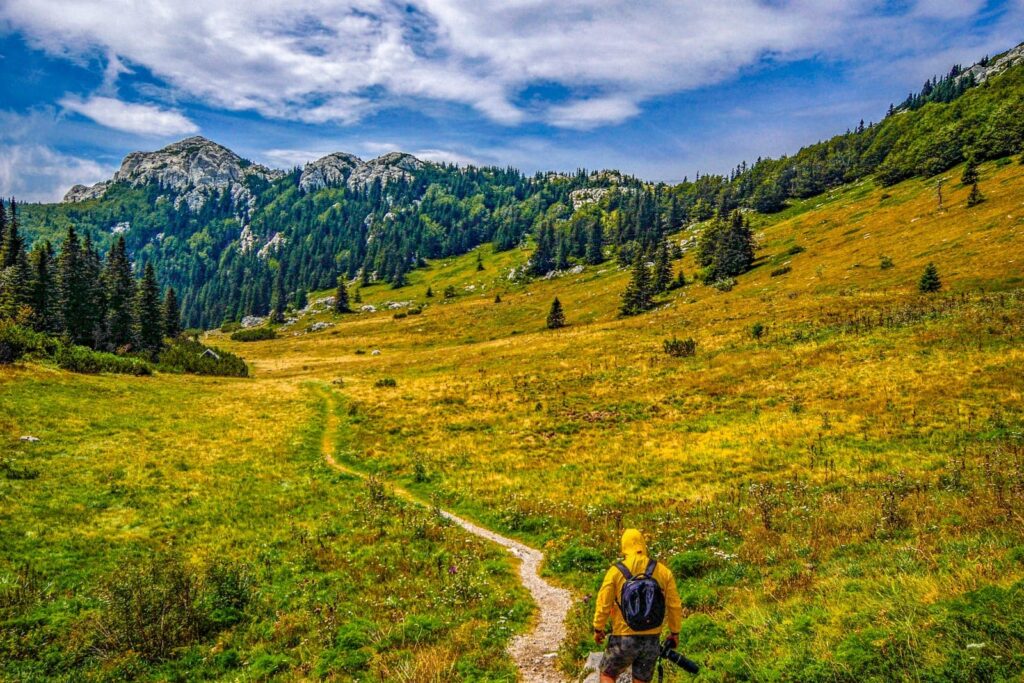
The park is accessible from late spring through autumn, with summer offering the most reliable weather conditions. Winter brings heavy snow that closes most trails and facilities. Visitors can enter the park from several points, with the main entrance at Babić Siča near the town of Krasno. The mountain lodge Zavižan provides basic accommodation within the park, allowing hikers to experience dawn and dusk in the mountains.
Exploring National Parks by Yacht
Croatia’s reputation as a sailing paradise perfectly complements its national park system, with five of the eight parks accessible directly by yacht. This unique combination offers travelers an extraordinary perspective on Croatia’s natural wonders while enjoying the freedom and luxury of a private vessel.
Yacht charter in Croatia has become increasingly popular, with options ranging from bareboat rentals for experienced sailors to skippered and fully crewed vessels for those seeking a more relaxed experience. The sailing season extends from April to October, with optimal conditions during the shoulder months of May-June and September when temperatures are pleasant and marinas less crowded.
The Adriatic Sea provides ideal sailing conditions with its calm waters, low tidal range (typically under 40cm), and predictable wind patterns. Over 70 well-equipped marinas along the coast ensure that sailors have access to all necessary facilities, from fuel and fresh water to provisions and technical support.
For national park enthusiasts, a yacht charter opens up unique opportunities to experience these protected areas from both land and sea. Kornati National Park, with its 89 islands and reefs, is perhaps the ultimate sailing destination, offering numerous sheltered bays for anchoring and swimming in crystal-clear waters. The park’s stark beauty is best appreciated from the deck of a yacht, with the “crown” formations of the outer islands creating dramatic backdrops for sailing photographs.
Mljet National Park can be approached by yacht, with moorings available in Polače and Pomena, providing easy access to the island’s saltwater lakes and lush forests. Brijuni National Park welcomes private vessels to the marina on Veliki Brijun, allowing sailors to explore the islands’ historical sites and Safari Park at their leisure.
Krka National Park, though inland, can be reached by sailing up the Krka River from Šibenik, with the journey itself offering spectacular views of the river canyon. Lastovo Nature Park, while not officially designated as a national park, is another archipelago paradise accessible only by boat, offering some of the clearest waters and most remote beaches in the Adriatic.
Popular yacht charter routes often combine visits to multiple parks. A northern Adriatic itinerary might include Brijuni National Park along with the islands of Cres and Lošinj. Central Dalmatia offers the possibility of visiting both Kornati and Krka within a week-long charter. From Dubrovnik or Split, sailors can reach Mljet and Lastovo, experiencing the less developed southern Dalmatian islands.
For those interested in exploring Croatia’s national parks by yacht, viravira.co offers a comprehensive selection of yacht charter options throughout Croatia, from sailing yachts and catamarans to motor yachts and traditional gulets. Their search platform allows you to find the perfect vessel for your national park adventure, with options for every budget and sailing experience level.
| Category | Details |
| Total Number of Parks | 8 National Parks covering 994 km² (759 km² land, 235 km² water) |
| Most Visited Park | Plitvice Lakes National Park – 1.45 million visitors in 2023 |
| Accessible by Yacht | Kornati, Mljet, Brijuni, Krka (via river), plus Lastovo Nature Park |
| Top Coastal Parks | Kornati (island archipelago), Mljet (saltwater lakes), Brijuni (historical island group) |
| Top Inland Parks | Plitvice (waterfall lakes), Paklenica (climbing & hiking), Risnjak & Northern Velebit (mountain wilderness) |
| Ideal Seasons to Visit | • Spring (Plitvice, Krka) • Summer (Mljet, Kornati, Brijuni) • Autumn (Risnjak, Velebit, Paklenica) |
| Sailing Season | April to October; best conditions in May-June and September (fewer crowds, mild weather) |
| Yacht-Friendly Highlights | • Kornati: 89 islands, crystal-clear coves, marine biodiversity • Mljet: Moor in Polače or Pomena for access to lakes • Brijuni: Marina Veliki Brijun for island exploration • Krka: Reach via Krka River from Šibenik |
| Top Natural Features | • Plitvice’s 16 cascading lakes • Skradinski buk waterfall (Krka) • Veliko & Malo Jezero (Mljet) • Mountain canyons & peaks (Paklenica, Velebit) |
| Activities Available | Hiking, sailing, snorkeling, kayaking, climbing, birdwatching, historical tours, diving |
| Conservation Challenges | Managing mass tourism (e.g., Plitvice), climate impacts, protecting fragile ecosystems, sustainable infrastructure |
| Tips for Responsible Travel | Visit during shoulder seasons, book entry slots in advance, use designated trails, avoid disturbing wildlife, support local communities |
| Accommodation Options | Hotels, apartments near parks; mountain lodges (Risnjak, Velebit); yacht stays for coastal parks; campsites in designated areas |
| Useful Resources | • Croatian National Tourist Board • viravira.co for yacht charter • Official park websites for Plitvice, Krka, Kornati, and more |
Conclusion
Croatia’s eight national parks represent the country’s most precious natural treasures, each offering unique landscapes, ecosystems, and experiences for visitors. From the world-famous cascading lakes of Plitvice to the remote mountain wilderness of Northern Velebit, these protected areas showcase the remarkable diversity of Croatia’s natural heritage.
The parks not only preserve critical habitats and species but also connect visitors with nature in profound ways. Whether hiking through ancient forests, sailing among pristine islands, climbing dramatic limestone cliffs, or simply marveling at the power and beauty of waterfalls, experiences in Croatia’s national parks create lasting memories and deeper appreciation for the natural world.
The opportunity to explore coastal national parks by yacht adds another dimension to Croatia’s appeal, combining two of the country’s greatest attractions – its magnificent protected areas and its world-class sailing conditions. This unique combination allows travelers to experience these natural wonders from both land and sea, accessing remote locations while enjoying the freedom and comfort of a private vessel.
As Croatia continues to develop its tourism industry, the sustainable management of these national parks remains crucial. By visiting responsibly and supporting conservation efforts, travelers can help ensure that these extraordinary landscapes remain protected for future generations to enjoy.
Whether you’re planning your first visit to Croatia or returning to explore more of its natural wonders, the country’s national parks offer endless opportunities for discovery, adventure, and connection with some of Europe’s most spectacular environments. From the peaks of Velebit to the depths of the Adriatic, Croatia’s protected areas invite you to experience nature at its most magnificent. Explore top activities and experiences in Croatia.
Practical Information and Resources
Best Times to Visit
- Plitvice Lakes: Spring for abundant waterfalls, autumn for fall colors, winter for fewer crowds
- Coastal Parks (Kornati, Mljet, Brijuni): May-June and September-October for pleasant temperatures and fewer crowds
- Mountain Parks (Risnjak, Northern Velebit, Paklenica): June-September when trails are clear of snow
Transportation
- All parks are accessible by car, with parking available at main entrances
- Public buses serve most parks from nearby cities
- Coastal parks require boat transportation (public ferries or private boats)
- Yacht charter provides flexible access to coastal parks
Learn more by reading our yacht charter in Croatia guide.
Accommodation Options
- Hotels and private accommodations are available near all park entrances
- Mountain lodges provide basic accommodation within Risnjak and Northern Velebit
- Camping is permitted only in designated areas
- Staying on a yacht while visiting coastal parks offers a unique experience
FAQs
Croatia has eight national parks, each showcasing a different natural landscape. From the cascading lakes of Plitvice to the island archipelago of Kornati, and the mountain wilderness of Risnjak, these parks reflect the country’s rich biodiversity and geographical diversity. Together, they protect over 994 square kilometers of land and sea.
Five of Croatia’s national parks are accessible by yacht:
Kornati National Park (island archipelago)
Mljet National Park (saltwater lakes)
Brijuni National Park (historical island group)
Krka National Park (via Krka River from Šibenik)
Lastovo Nature Park (not a national park, but a protected marine area)
These parks offer mooring spots, hidden bays, and unique natural experiences for sailors.
The best time depends on the park and what you want to experience:
Spring (April–June): Best for waterfalls at Plitvice and Krka, fewer crowds
Summer (July–August): Ideal for coastal parks like Mljet and Kornati, warmest weather
Autumn (September–October): Great for hiking in mountain parks like Velebit and Paklenica, vibrant fall colors
Visiting in the shoulder season also means lower entrance fees and a more peaceful experience.
Activities vary by park but include:
Hiking and trekking (Paklenica, Northern Velebit, Risnjak)
Swimming and snorkeling (Mljet, Brijuni, Kornati)
Climbing and caving (Paklenica)
Sailing and kayaking (Kornati, Krka, Mljet)
Birdwatching and wildlife viewing (Vransko Lake, Risnjak)
Cultural sightseeing (Brijuni’s ruins, Krka’s monasteries)
Sustainable tourism is essential for preserving Croatia’s parks. Travelers should:
Visit during off-peak seasons to reduce crowd pressure
Follow marked trails and avoid damaging ecosystems
Avoid swimming in restricted areas like Skradinski buk (Krka)
Use reusable water bottles and bags to reduce waste
Support local communities by buying local products and services
These small actions help protect natural and cultural heritage for future generations.

